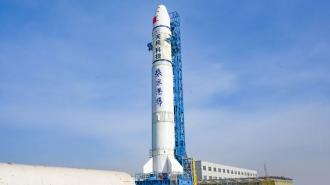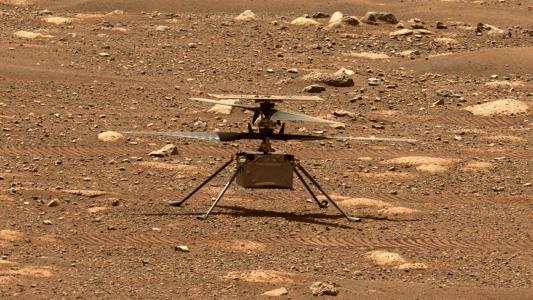A Chinese rocket startup just made history by being the first private company to successfully reach orbit on its first try — marking another win for China’s fast-growing aerospace industry.
The launch: On April 2, Space Pioneer — aka Beijing Tianbing Technology Co. — launched its first rocket, Tianlong-2, from Jiuquan Satellite Launch Center in the Gobi Desert, successfully sending a small remote-sensing satellite into a sun-synchronous orbit.
Prior to this, no private company had successfully reached orbit on its first attempt — SpaceX didn’t hit the milestone until its fourth attempt; recently, Relativity Space failed to reach orbit during its first try.
Fueled up: Tianlong-2’s launch was also notable due to the combination of liquid oxygen and a coal-derived kerosene powering the rocket — no private company in China had launched a liquid-fueled rocket before Tianlong-2’s flight.
Unlike solid fuel rockets, which burn up all their fuel at once, liquid propellant rockets can be throttled, which makes them easier to reuse — SpaceX’s Falcon 9 wouldn’t be able to make those nice controlled landings if it didn’t use liquid fuel.
While Tianlong-2 wasn’t reusable, Space Pioneer has already secured funding to build a larger rocket, Tianlong-3, that will have a reusable first stage. It is expected to launch in early 2024, and if all goes well, they anticipate flying the rocket 12 times in 2025.
Some of those launches will be to help China build Guowang, a broadband-delivering satellite mega constellation, similar to SpaceX’s Starlink. With a payload capacity of 15 tons to low-Earth orbit, Tianlong-3 should be able to carry up to 60 satellites on each flight.
The big picture: The successful Tianlong-2 launch is another example of how China is positioning itself as a major player in the aerospace industry.
Prior to this, no private company had successfully reached orbit on its first attempt.
Since just 2020, the nation has established its own space station, discovered the first onsite evidence of water on the moon, became just the second country to deploy a Mars rover, and brought back the first new samples of moon dirt since the 1970s.
In addition to getting ready to establish Guowang, China is also developing a massive new rocket and making plans to put its first astronaut on the moon before the end of the decade — and some experts predict these plans could fuel America’s own space ambitions.
“If you go back to the ’50s and ’60s, it was a rivalry, and competition between the Soviet Union and America that did launch a real space race to the moon,” Quentin Parker, Director of Space Research at the University of Hong Kong, told CBS News.
We’d love to hear from you! If you have a comment about this article or if you have a tip for a future Freethink story, please email us at [email protected].






